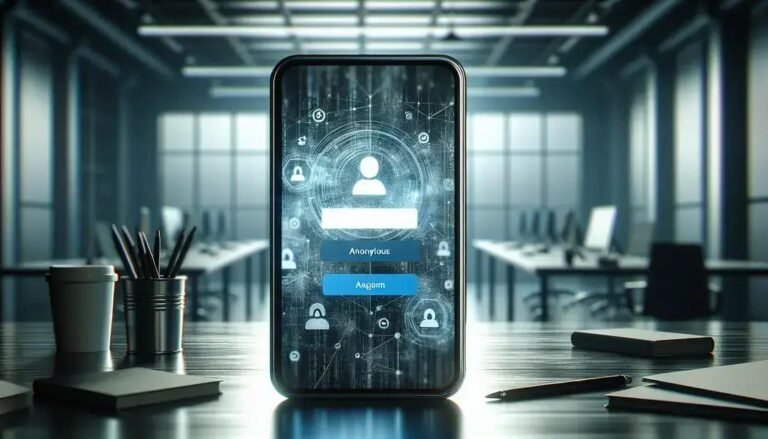Apps That Help Restore Lost Photos on Your Mobile
Have you ever accidentally deleted photos from your device and instantly regretted it? You’re not alone. Many of us have faced the distress of losing cherished moments captured in pictures. Fortunately, Apps to Recover Photos can come to the rescue. These nifty tools offer hope to retrieve lost snapshots, making it seem like the loss never happened. But with the myriad options available, how do you select one that actually works?
Choosing the right app to resurrect your precious memories can feel overwhelming. With so many options promising miraculous results, it’s hard to know which ones deliver. In this piece, we’ll cut through the noise and demystify the process of picking a reliable photo recovery app. Whether it’s photos from a recent vacation or special family events, getting them back is easier than you might think.
Stay with us as we navigate the world of photo recovery, guiding you through choosing the best tools and offering tips to safeguard your digital memories in the future. Ready to dive in? Let’s unravel the path to recovering those irreplaceable images!
How To Choose The Right Photo Recovery App
Choosing the right photo recovery app can seem like a daunting task, especially with so many options available. However, by focusing on a few key factors, you can simplify the process and find an app that suits your needs.
Identify Your Device Type
The first step is to identify the type of device you’re using, as different apps are designed for specific platforms, such as Android, iOS, or Windows. Make sure the app supports your device to ensure compatibility and efficiency.
Check User Reviews and Ratings
User reviews and ratings are invaluable resources for gauging the effectiveness of a photo recovery app. Look for apps with consistently high ratings and read both positive and negative feedback to understand common experiences and any potential issues.
Test Free Trials or Demos
Many apps offer free trials or demos. Use these to test the app’s features without any financial commitment. Pay attention to how user-friendly the interface is and whether the app can recover recent photos as well as those deleted long ago.
Evaluate Recovery Capabilities
Not all apps are equal in terms of recovery capabilities. Some can recover photos lost due to accidental deletion, while others can restore images from corrupted storage. Ensure the app you choose can handle the type of data loss you have encountered.
By following these steps, you can confidently select a photo recovery app that is both effective and reliable, helping you retrieve your valuable memories with ease.
Step-By-Step Guide On Using Recovery Apps
Getting back those accidentally deleted or lost photos is easier than you might think with the right recovery app. Follow these steps to efficiently use recovery apps and retrieve your precious memories.
Download and Install the App
First, download a trusted photo recovery app from your device’s app store. It’s crucial to verify the app’s reputation by checking user reviews and ratings. Once you’ve chosen an app, install it on your device following the on-screen instructions.
Scan Your Device
Open the app and select the option to scan your device for lost photos. Scanning might take some time, depending on the amount of data stored on your device. During this process, the app will search for deleted photos that can still be recovered. It’s important to be patient and avoid interrupting the scan.
Preview and Select Photos
After the scan is complete, the app will display a list of recoverable photos. Preview these photos to identify the ones you’d like to recover. Most apps allow you to select multiple photos at once, making it convenient to restore several images simultaneously.
Recover Your Photos
Once you’ve selected the photos to recover, tap the ‘Recover’ button to save them back to your device. Make sure there’s enough storage space available to save the recovered images. The photos will typically be restored to a default folder, but you should have the option to select the destination.
By following this step-by-step guide, you can efficiently navigate through a photo recovery app and retrieve lost images with ease and confidence.
Alternatives If Recovery Apps Fail
Sometimes, photo recovery apps might not fully succeed in retrieving images. When this happens, there are several alternatives you can explore to recover your lost photos.
Check Cloud Backups
One of the first alternatives is to check if your photos are backed up in the cloud. Many devices automatically sync photos to services like Google Photos, iCloud, or Dropbox. Log into these services and navigate to the photo section to see if your images are available.
Use Professional Recovery Services
If cloud backups don’t have your photos, consider using professional data recovery services. These businesses have advanced tools and expertise to recover data from damaged devices. While this option may be more costly, it often provides the highest success rates.
Look at External Storage
If you often transfer photos to external storage devices like USB sticks or external hard drives, check these for your lost photos. Sometimes, files remain stored here as duplicates, even after deletion from your primary device.
Consult Online Forums and Communities
Online tech communities and forums can be invaluable. Users often share solutions that have worked for them, including specific software recommendations or unconventional methods. Engage with these communities to gather insights and troubleshoot your specific issue.
By exploring these alternatives, you can enhance the chances of recovering your lost photos when typical recovery apps don’t provide the needed solutions.
Tips To Prevent Photo Loss In The Future
Protecting your digital memories is essential to avoid the heartache of losing precious photos. Here are some effective tips to ensure your images remain safe and secure.
Regular Backups
Make it a habit to back up your photos regularly. Use cloud storage solutions like Google Photos, iCloud, or Dropbox, which offer automatic syncing features. This not only safeguards your images but also frees up space on your device.
Use External Storage
Consider storing backups on external hard drives or USB drives for added security. These devices provide reliable storage options and can be stored in physical locations separate from your primary device, preventing loss from theft or damage.
Organize Photos
Keeping your photos organized in labeled folders makes it easier to manage and retrieve them later. Regularly delete duplicates and unwanted images to reduce clutter. Organizing also helps keep track of photos that are not yet backed up.
Protect from Malware
Ensure your device is protected from malware with a robust antivirus solution. Malware can corrupt or delete files, including your photos. Regular scans and updates help maintain the security of your device and data.
Incorporating these tips into your routine will significantly enhance the safety of your photo collection, preserving your memories for years to come.
FAQ – Frequently Asked Questions About Photo Recovery and Protection
What is the best way to recover deleted photos?
The best way to recover deleted photos is by using reliable photo recovery apps. Make sure to choose apps with high ratings and positive user reviews.
How often should I back up my photos?
It’s recommended to back up your photos regularly, ideally once a week, to ensure that your latest images are secured.
Can I recover photos from a damaged device?
Yes, professional data recovery services can help retrieve photos from damaged devices, although this might be more costly.
How can cloud services help in photo recovery?
Cloud services like Google Photos or iCloud automatically back up your photos, making it easy to recover them if lost from your device.
What precautions should I take to prevent photo loss?
Regular backups, using external storage, organizing photos, and protecting your device from malware are effective ways to prevent photo loss.
Are there risks associated with photo recovery apps?
While most photo recovery apps are safe, some may pose privacy risks. Always use apps from reputable developers and check permissions carefully.






